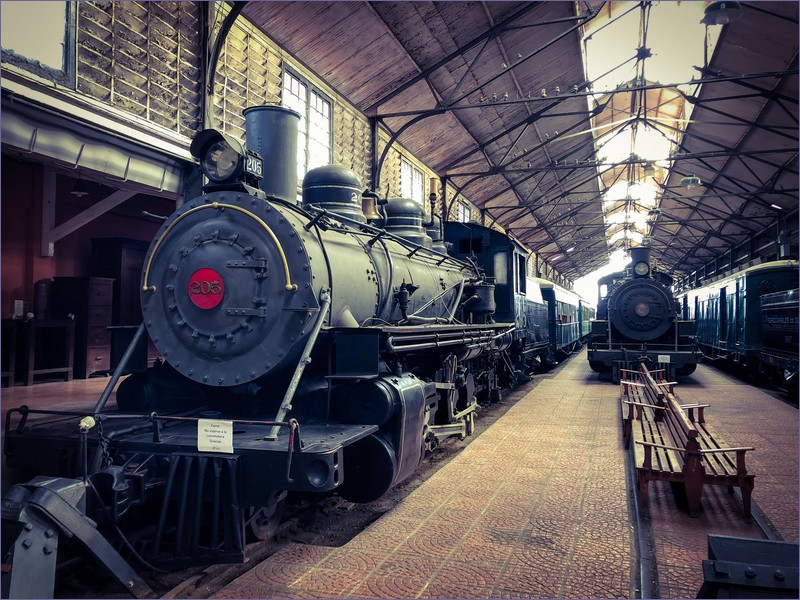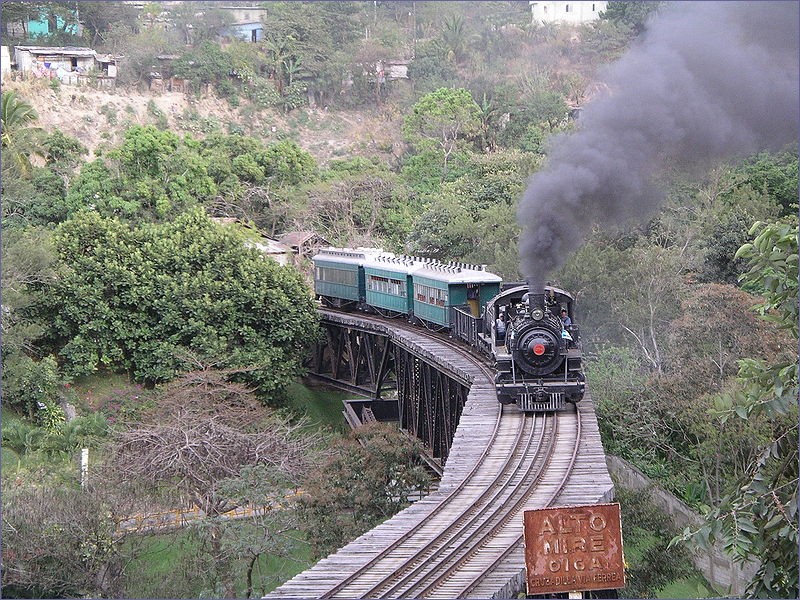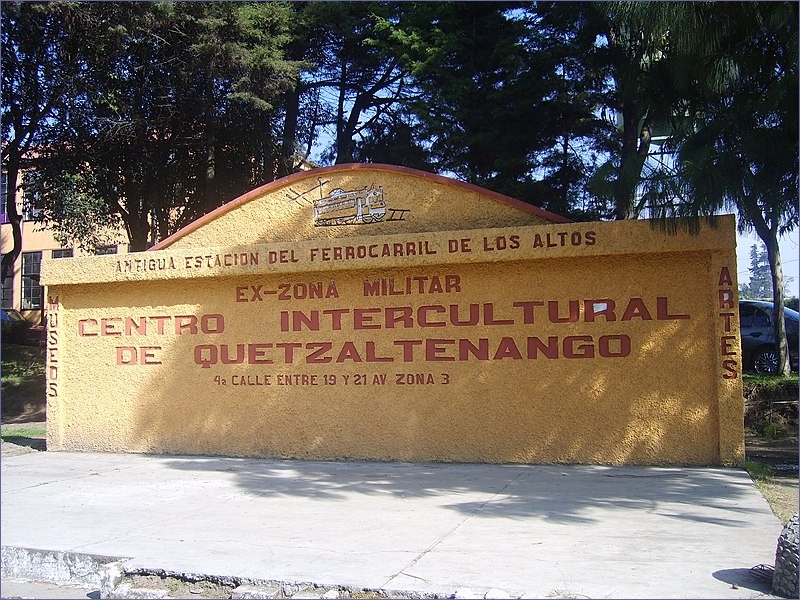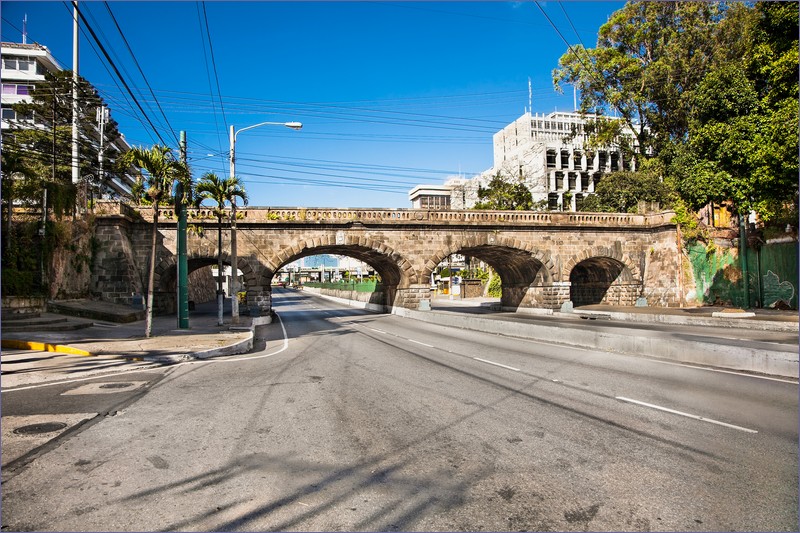There are no passenger trains in Guatemala, except for a toy train in amusement park in Xetuful. There is a railway museum in the country’s capital, and Guatemala has a rich and interesting railway history. Sorry for my poor English.
Last updated: 29.01.2024
Railway Museum in Guatemala City
The railway museum “Museo del Ferrocarril FEGUA”, is located in the former main railway station in Guatemala City, Guatemala. The museum has a collection of steam and diesel locomotives, passenger carriages and other rolling stock and items such photos, documents, uniforms, connected with the railway. In the museum you you can learn about the history of Guatemala’s railways. Interiors of the locomotives and passenger carriages are available for tourists.
It’s one of the most recommended tourist attractions in Guatemala City, especially for railway enthusiasts and families with kids.

Xetulul amusement park
Currently, the only operational train in Guatemala is the narrow-gauge railway at the Xetulul amusement park in Retalhuleu, in the south of the country. The toy train is hauled a replica steam locomotive and passenger wagons often used in park railways. The railway runs around the amusement park, but I have not been able to find any detailed information on the length of the route or the timetable.
History of the railway in Guatemala
Construction of the first railway in Guatemala began in 1877. The first section was opened in 1880 (Puerto San José – Escuintla), four years later the line was extended to Guatemala City – the capital of the country. The line was built with a gauge of 914 mm, and lines completed later had the same gauge.
In 1908, the construction of another line Guatemala – Puerto Barrios (320 km) was completed. The line was used to transport bananas to the port of Puerto Barrios, a city in northern Guatemala, close to the border with Honduras. The American concern United Fruit Company (UFCo) obtained a 99-year concession to operate the line.
A railway connection with Mexico and El Salvador was also built. International Railways of Central America (IRCA) was responsible for transporting goods (mainly bananas) on international lines. In the 1950s, IRCA took over United Fruit Company’s shares and carried out transport on the entire Guatemalan railway network.
Banana transport was becoming unprofitable due to the growing importance of road transport, and in 1968 the railway network was taken over by the state railways – FEGUA – Ferrocarriles de Guatemala (FEGUA) .
In 1996, all rail transport in Guatemala was ceased due to economic reasons.
In October 1997, Railroad Development Corporation received a 50-year concession to revitalize the railway network and operate transport. The concession included the management of port infrastructure. Railroad Development Corporation, together with local investors, established Ferrovías Guatemala (FVG).
In 1998, much of the railway infrastructure was destroyed by Hurricane Mitch.
On April 15, 1999, freight transport was launched in the area around the city of El Chile. Freight trains carried cement on a distance of approximately 60 kilometers.
Seven years later, the government issued a decree declaring the activities of the Railroad Development Corporation harmful to the interests of the state The last Ferrovías Guatemala made his journey in September 2007, since then the case has been under arbitration for five years, and when the trains were not running, thieves had stolen many elements of the railway infrastructure.
On December 1, 2013, Railroad Develompent Corporation was nationalized.
Currently operational remains railway line from Ciudad Hidalgo, Mexico, that crosses the Guatemala River on a bridge to reach Tecún Umán. Only 1.5 km of this line lies within Guatemala.
In 2021 were announced plans to rehabilitate 235 km of rail lines from Tecún Umán city to Quetzal port, with a 30km branch from Retalhuleu department to Champerico port. Stage two comprises 250 km from Puerto Barrios port to El Rancho city near El Progreso port, and stage three 165km from Escuintla department to El Rancho. Guatemala plans to build a new standard gauge line from Tecún Umán to Guatemala City (274km) and connect railway network with railway networks of Mexico and Salvador. All lines are intended for freight traffic only.

Ferrocarril de Los Altos (history)
In addition to the main railway lines, there were two other interesting railway lines in Guatemala that were not connected to the national railway network. The first line was the short-lived Ferrocarril de Los Altos railway with a gauge of 1,435 mm.
The first short railway line in Guatemala’s second largest city area – Quezaltenango – was built in 1899-1910. According to sources, it was a rack railway. In the 1920s, a decision was made to extend the line and electrify it.
In 1924, a contract was signed with the German company Elektricitäts Gesellschaft of Berlin to build a 44-kilometer railway line between Quezaltenango and San Felipe. Through San Felipe ran a main railway line and there was a railway station of International Railways of Central America (IRCA).
Four years later, the construction of the San Felipe – Santa Maria section (16km) was completed. The tram-like trains were delivered, unofficial test traffic began. In December 1928, the derailment claimed three lives and traffic was suspended for 15 months.
The entire line was put into operation on March 30, 1930. The ceremonial opening of the line was accompanied by the issue of a series of stamps with themes related to this line by the Guatemalan post office.
Trains ran twice a day, covering 44 kilometers with journey time two hours and 25 minutes. Trains stop at eight stations.
It was the only electric railway in Central America, but it made huge losses.
On September 19, 1933, a hurricane destroyed part of the track. Residents and workers declared that they would rebuild the damage with on their own but the authorities decided to close and dismantle the railway. On November 10, 1933, the railway was permanently closed. The rolling stock was sold for scrap. An only reminder of the railway is a small museum established at the former railway station in Quezaltenango.

Ferrocarril Verapaz (history)
The second railway line, not connected to Guatemala’s main railway network, was the Ferrocarril Verapaz – the railway line from Panzos to Tucuru built between 1884 and 1895. The railway was used to transport coffee produced in the city of Coban, and there were also mixed trains with passenger carriages. It is known that it operated until 1965, but I have not found any detailed information.
See also:
Railways in Americas by country
